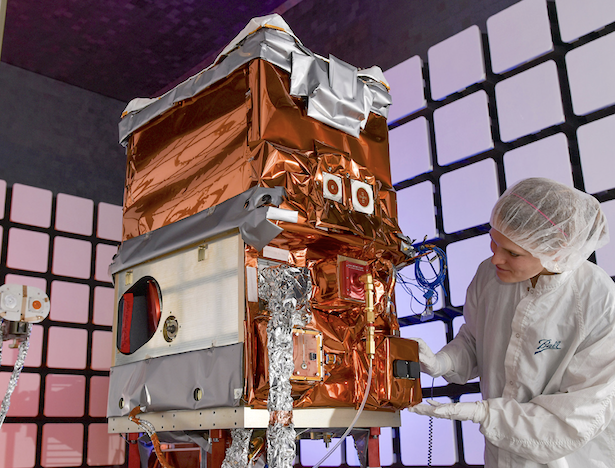

Ball Aerospace, a partner in the new NASA Green Propellant Infusion Mission (GPIM) announced their Ball Aerospace-built small spacecraft arrived in Florida today to prepare for a June launch on board a SpaceX Falcon Heavy rocket. GPIM is NASA's first opportunity to demonstrate a new "green" propellant and propulsion system in orbit – an alternative to conventional chemical propulsion systems.
GPIM is a sustainable and efficient approach to spaceflight, and the new propellant will demonstrate the practical capabilities of a Hydroxyl Ammonium Nitrate fuel and oxidizer blend, called AF-M315E. This innovative, low toxicity, "green" propellant was developed by the Air Force Research Laboratory. GPIM is part of NASA's Technology Demonstration Missions program within the Space Technology Mission Directorate.
Dr. Makenzie Lystrup, vice president and general manager, Civil Space, Ball Aerospace stated that GPIM was a truly collaborative effort, working with their partners, NASA, Aerojet Rocketdyne, Air Force Research Laboratory, U.S. Air Force and SpaceX. They are proud to be part of this historic mission to test a new 'green' propellant on board Ball's flight-proven small satellite, helping to provide science at any scale.

Ball Aerospace is responsible for system engineering; flight thruster performance verification; ground and flight data review; spacecraft bus; assembly, integration and test; and launch and flight support. The GPIM bus uses the smallest of the Ball Configurable Platform (BCP) satellites, which is about the size of a mini refrigerator, and was built in just 46 days. The BCP provides standard payload interfaces and streamlined procedures, allowing rapid and affordable access to space with flight-proven performance.
Lystrup added they have shown that Ball can provide small, fast and affordable solutions with excellent performance and now they're excited to do that for NASA.
There are currently two BCP small satellites performing on orbit: STPSat-2, which launched in Nov. 2010, and STPSat-3, which launched in November 2013. The two STP satellites were built for the U.S. Air Force Space Test Program's Standard Interface Vehicle (STP-SIV) project. Ball also has two BCP small satellites in development for NASA's Imaging X-Ray Polarimetry Explorer (IXPE) and Spectro Photometer for the History of the Universe, Epoch of Reionization and Ices Explorer (SPHEREx) missions.

